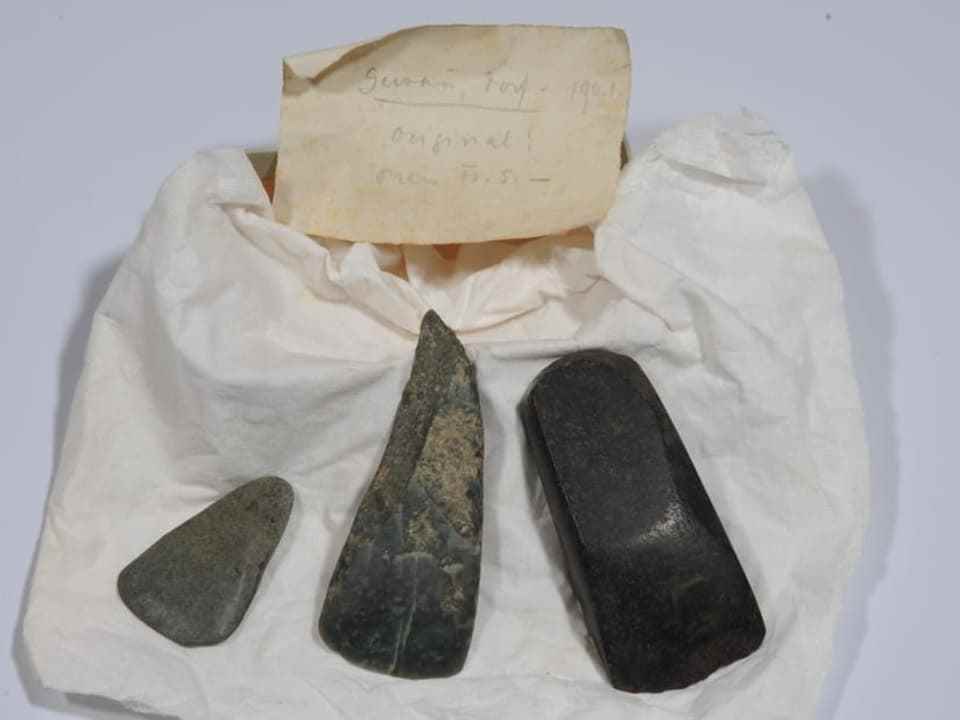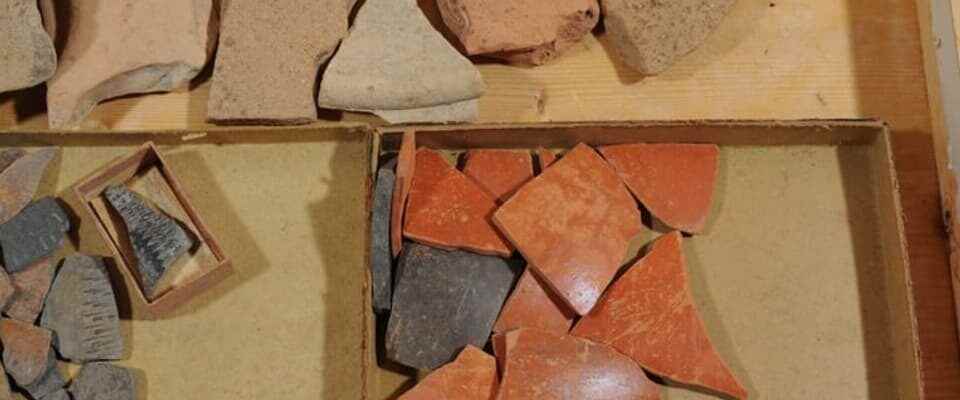contents
While cleaning up, a 100-year-old collection turned up in the Sarner Kollegium – with around 2,000 archaeological finds.
Various objects lie loose in the old drawers: pottery shards, flints, bronze and stone axes, but also simple objects such as iron nails. They date from the period from the Paleolithic to the early modern period.
There are around 2000 pieces that have been kept in the Sarner Benedictine monastery for decades. Certain objects were considered lost. It is mainly due to chance that they have now reappeared.
Legend:
Roman pottery shards from the Alpnach-Uechtern estate.
Canton Archeology Lucerne
Part of the collection was stored in a cupboard in the stairwell. The Benedictines were aware of this, says Christian Harb from the Lucerne Cantonal Archaeology, which takes care of the objects. “But the problem was: There are many empty boxes there and some of the finds have been mixed up. So you got the feeling that the collection wasn’t that important.” The opposite is the case: the collection is “a true treasure trove,” enthuses archaeologist Harb.
One had the feeling that the collection was not incredibly important.
Because it consists not only of the objects in the stairwell cupboard: “When the Benedictine college asked us if we wanted to take over the collection, we noticed that there were more finds in the attic that we didn’t know anything about before.”
The importance of the collection also comes from the man who set it up: Father Emmanuel Scherer. Born in Entlebuch, he lived and taught in Sarnen around the turn of the last century. “He was originally a kind of polymath, but turned to archeology early on,” says Christian Harb. In this field, Father Emmanuel Scherer became a pioneer in the region: “He is considered the father of archeology in Central Switzerland.”

Legend:
Important archaeologist for Central Switzerland: Father Emmanuel Scherer (1876–1929)
Obwalden State Archives
What makes his collection, which has now been stored more or less unnoticed in the monastery for decades, so important: “It actually depicts the history of Central Switzerland,” explains the archaeologist. There are also finds from other cantons and countries. Harb is enthusiastic: “It is of course rare in the career of an archaeologist to be confronted with such an important collection.”
What’s more: Father Emmanuel Scherer not only collected things himself, he also documented and published about other finds. “These are very important sources for us,” says Christian Harb. In particular, he emphasizes Scherer’s documentation of the finds in the canton of Obwalden, “where not very much actually came out after his death in 1929.”

Legend:
A Neolithic stone ax blade for five francs? It used to be common to sell finds to finance excavations.
Canton Archeology Lucerne
There are almost 60 sites in the canton. Harb explains that the collection will be able to close some gaps. The finds can now be reclassified and dated using modern means. For this purpose, the collection items are brought from Obwalden to the cantonal archeology department in Lucerne.
At the same time, Father Emmanuel’s diaries will be searched in the hope of finding important references to objects whose inscriptions have been lost over the past few decades. This work is likely to be time-consuming: around a third of the collection is unlabelled.
